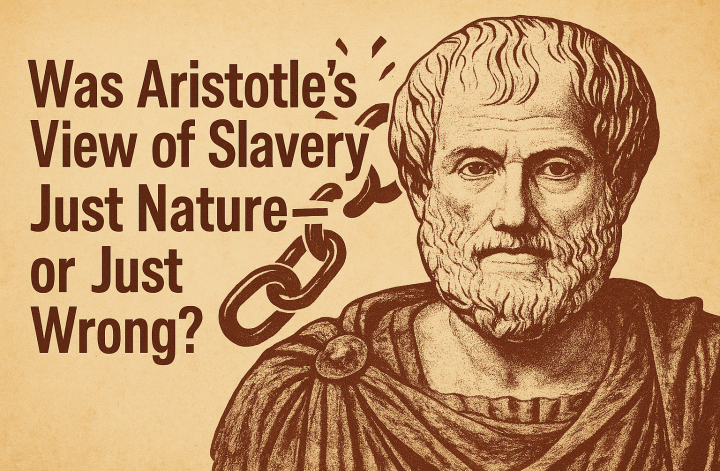It is an article of faith in Islam that the Quran is a perfect revelation of God delivered through the prophet Muhammad to humanity. It became necessary for God to send the Quran because of the corruptions of the Scriptures of Judaism and Christianity that came before it. (Strictly and properly speaking, Christianity is a sect of Judaism. It was one of many sects of Judaism in the first century AD.) In a restorative move, God provided Muhammed with fresh revelations. In some cases, the revelations are altogether missing from the Bible – which, in a typical Muslim’s mind, further confirms the corruption charges – or are present in the Bible in a different form.
Perhaps the most consequential doctrinal issues that the Quran touches on concern the death (and resurrection) of Jesus and the Trinity. The Quran explicitly denies that Jesus died and also rejects a Trinitarian conception of God. The death of Jesus is a historical question. Although the Quran is 600 years after the event, many Muslims believe it can authoritatively speak to prior historical events. It seems to me that the key to this stance is the belief that the Quran is the ultimate perfect revelation of the all-knowing God. Of course, if this belief is true, it logically justifies the stance. In this series, I shall argue that the Quran is heavily dependent on non-canonical Judeo-Christian writings, for many of its extra-biblical contents and its claims on Christian doctrinal matters, especially the death of Jesus and the Trinity, may be summarily disregarded.
Pseudepigrapha are works whose claimed authors are not the actual authors. In biblical studies, pseudo-writers typically ascribed their works to critical biblical figures. Hence, we have the Testament of Moses, the Assumption of Moses, 1 Enoch, the Apocalypse of Abraham, the Gospel of Barnabas, and so on. The Pseudepigrapha are sometimes referred to as Apocrypha in certain Christian traditions. Pseudepigrapha are not all made equal. Some of them are highly respected. The book of 1 Enoch is an easy example. Although non-canonical, it is cited a few times by some canonical New Testament writers, such as Jude. (This doesn’t mean the New Testament authors endorse everything in 1 Enoch.) Other pseudepigraphal works range from the middle of the road to the opposite end.
The pseudepigraphal work I want to begin with is the Gospel of Pseudo-Matthew. The earliest extant manuscript witness of this work dates to the 5th Century AD (at the latest). Indeed, scholars now know that some of the central stories in this work existed in slightly different forms centuries earlier. Therefore, at the very least, this work predates the Quran by approximately 200 years. Here is Chapter 20 of the Gospel, as translated by Alexander Roberts and others:
And it came to pass on the third day of their journey, while they were walking, that the blessed Mary was fatigued by the excessive heat of the sun in the desert; and seeing a palm tree, she said to Joseph: Let me rest a little under the shade of this tree. Joseph therefore made haste, and led her to the palm, and made her come down from her beast. And as the blessed Mary was sitting there, she looked up to the foliage of the palm, and saw it full of fruit, and said to Joseph: I wish it were possible to get some of the fruit of this palm. And Joseph said to her: I wonder that thou sayest this, when thou seest how high the palm tree is; and that thou thinkest of eating of its fruit. I am thinking more of the want of water, because the skins are now empty, and we have none wherewith to refresh ourselves and our cattle. Then the child Jesus, with a joyful countenance, reposing in His mother’s bosom, said to the palm: O tree, bend thy branches, and refresh my mother with thy fruit. And immediately at these words the palm bent its top down to the very feet of the blessed Mary, and they gathered from it fruit, with which they were all refreshed. And after they had gathered all its fruit, it remained bent down, waiting the order to rise from Him who bad commanded it to stoop. Then Jesus said to it: Raise thyself, O palm tree, and be strong, and be the companion of my trees, which are in the paradise of my Father; and open from thy roots a vein of water which has been hid in the earth, and let the waters flow, so that we may be satisfied from thee. And it rose up immediately, and at its root there began to come forth a spring of water exceedingly clear and cool and sparkling. And when they saw the spring of water, they rejoiced with great joy, and were satisfied, themselves and all their cattle and their beasts. Wherefore they gave thanks to God.
A Christian reader is likely learning about this for the first time. However, the Muslim reader is already familiar with much of the material because of a parallel account in the Quran about Mary. Here is Quran 19: 22-25,
Surah Maryam, Verse 22:
فَحَمَلَتْهُ فَانتَبَذَتْ بِهِ مَكَانًا قَصِيًّا
So she conceived him; then withdrew herself with him to a remote place.
فَأَجَاءَهَا الْمَخَاضُ إِلَىٰ جِذْعِ النَّخْلَةِ قَالَتْ يَا لَيْتَنِي مِتُّ قَبْلَ هَٰذَا وَكُنتُ نَسْيًا مَّنسِيًّا
And the throes (of childbirth) compelled her to betake herself to the trunk of a palm tree. She said: Oh, would that I had died before this, and had been a thing quite forgotten!
فَنَادَاهَا مِن تَحْتِهَا أَلَّا تَحْزَنِي قَدْ جَعَلَ رَبُّكِ تَحْتَكِ سَرِيًّا
Then (the child) called out to her from beneath her: Grieve not, surely your Lord has made a stream to flow beneath you;
وَهُزِّي إِلَيْكِ بِجِذْعِ النَّخْلَةِ تُسَاقِطْ عَلَيْكِ رُطَبًا جَنِيًّا
And shake towards you the trunk of the palmtree, it will drop on you fresh ripe dates:
The similarities should be apparent. Notice also how the pseudo-gospel account provides a more detailed explanation of the Quran. For instance, verse 24 merely says God has made a stream to flow beneath Mary. But if the stream were apparent, she would have drunk some water without complaining. Both accounts claim that Jesus spoke and performed a miracle as an infant (contrary to the claims of the canonical Gospels, which portray Jesus performing miracles only after he began his public ministry as a 30-year-old). Quran 19:29-30 makes this explicit:
Surah Maryam, Verse 29:
فَأَشَارَتْ إِلَيْهِ قَالُوا كَيْفَ نُكَلِّمُ مَن كَانَ فِي الْمَهْدِ صَبِيًّا
But she pointed to him. They said: How should we speak to one who was a child in the cradle?
Surah Maryam, Verse 30:
قَالَ إِنِّي عَبْدُ اللَّهِ آتَانِيَ الْكِتَابَ وَجَعَلَنِي نَبِيًّا
He said: Surely I am a servant of Allah; He has given me the Book and made me a prophet;
So, Jesus supernaturally spoke before he was old enough to do so, just like the pseudogospel portrays. The Quran has more to say about Jesus’ childhood. Here is Quran 3:49,
Surah Aal-e-Imran, Verse 49:
وَرَسُولًا إِلَىٰ بَنِي إِسْرَائِيلَ أَنِّي قَدْ جِئْتُكُم بِآيَةٍ مِّن رَّبِّكُمْ أَنِّي أَخْلُقُ لَكُم مِّنَ الطِّينِ كَهَيْئَةِ الطَّيْرِ فَأَنفُخُ فِيهِ فَيَكُونُ طَيْرًا بِإِذْنِ اللَّهِ وَأُبْرِئُ الْأَكْمَهَ وَالْأَبْرَصَ وَأُحْيِي الْمَوْتَىٰ بِإِذْنِ اللَّهِ وَأُنَبِّئُكُم بِمَا تَأْكُلُونَ وَمَا تَدَّخِرُونَ فِي بُيُوتِكُمْ إِنَّ فِي ذَٰلِكَ لَآيَةً لَّكُمْ إِن كُنتُم مُّؤْمِنِينَ
And (make him) an apostle to the children of Israel: That I have come to you with a sign from your Lord, that I determine for you out of dust like the form of a bird, then I breathe into it, and it becomes a bird with Allah’s permission, and I heal the blind and the leprous, and bring the dead to life with Allah’s permission, and I inform you of what you should eat and what you should store in your houses; most surely there is a sign in this for you if you are believers.
Readers of the New Testament must have noticed a rather conspicuous absence of accounts of Jesus’ childhood. The singular story we have about Jesus’ childhood, beyond infancy, was when he stayed behind in Jerusalem at the end of a festival, listening to Jewish teachers of the Torah while his family looked for him. He was about 12 years old. The next time we read of him, he was 30 years old. Indeed, there must be stories to tell about those years! The Childhood of the Saviour, also known as the Infancy Gospel of Thomas, is a second-century apocryphal work that creatively attempts to fill the gaps. It is a well-known, non-authoritative work. It features a story recounted in part in the Quran. Here is a critical translation by Tony Burke (2009):
When the boy Jesus was five years old, he was playing at the ford of a rushing stream. And he gathered the disturbed water into pools and made them pure and excellent, commanding them by the character of his word alone and not by means of a deed. Then, taking soft clay from the mud, he formed twelve sparrows. It was the Sabbath when he did these things, and many children were with him. And a certain Jew, seeing the boy Jesus with the other children doing these things, went to his father Joseph and falsely accused the boy Jesus, saying that, on the Sabbath he made clay, which is not lawful, and fashioned twelve sparrows. And Joseph came and rebuked him, saying, “Why are you doing these things on the Sabbath?” But Jesus, clapping his hands, commanded the birds with a shout in front of everyone and said, “Go, take flight, and remember me, living ones.” And the sparrows, taking flight, went away squawking. When the Pharisee saw this he was amazed and reported it to all his friends.
So, the story of the boy Jesus animating a clay bird was known 500 years before the Quran referenced it.
Here is a critical point to remember throughout this series: The claim is NOT that the Quran directly derived these stories (and many others we will touch on later) from pseudepigraphal works. On the contrary, the point is that the Quranic stories existed in recognizable forms some 200 years before Muhammad was born. As stories travel across geographical space and time, they are bound to morph as people adapt them to suit their needs. Therefore, any divine origins claimed for the Quran’s version must be understood within this broader historical context.
Now, we are ready for Part 2.
Work Cited
Burke, Tony. The Childhood of the Savior (Infancy Gospel of Thomas): A New Translation, 2009. https://www.tonyburke.ca/infancy-gospel-of-thomas/the-childhood-of-the-saviour-infancy-gospel-of-thomas-a-new-translation/
“The Gospel of Pseudo-Matthew.” Eds Alexander Roberts, Sir James Donaldson, and Arthur Cleveland Coxe, Gnosis, The Gnostic Society Library, 1886, www.gnosis.org/library/psudomat.htm. Accessed 25 May 2024.
Further Reading
https://wikiislam.net/wiki/Main_Page





1 Comment